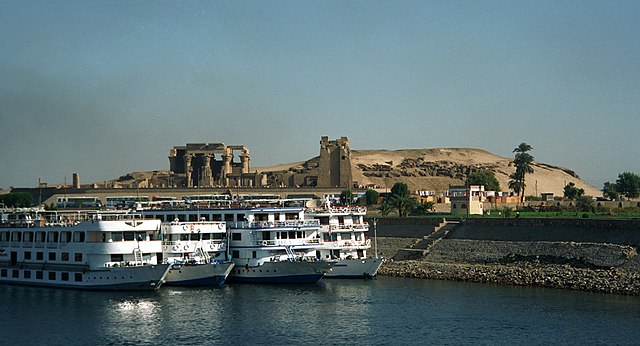Kom Ombo is an agricultural town in Egypt famous for the Temple of Kom Ombo. It was originally an Egyptian city called Nubt, meaning City of Gold. Nubt is also known as Nubet or Nubyt. It became a Greek settlement during the Greco-Roman Period. The town's location on the Nile, 50 kilometres (31 mi) north of Aswan (Syene), gave it some control over trade routes from Nubia to the Nile Valley, but its main rise to prominence came with the erection of the Temple of Kom Ombo in the 2nd century BC.
Tour boats at the Temple of Kom Ombo
The double entrance to Kom Ombo Temple
Sobek at the Temple of Kom Ombo.
Cleopatra image at the Temple of Kom Ombo.
The Temple of Kom Ombo is an unusual double temple in the town of Kom Ombo in Aswan Governorate, Upper Egypt. It was constructed during the Ptolemaic dynasty, 180–47 BC. Some additions to it were later made during the Roman period.
The double entrance to Kom Ombo Temple
Kom Ombo Temple
The calendar shows the figures for the days of the month (roll over the picture) and the hieroglyphs for the inundation season, Akhet. On the thirtieth of the Season of the Harvest, one can see the hieroglyph for the Season of the Emergence, which indicates the end of the harvest season. The next day is Akhet.
Kom Ombo Temple before reconstruction







